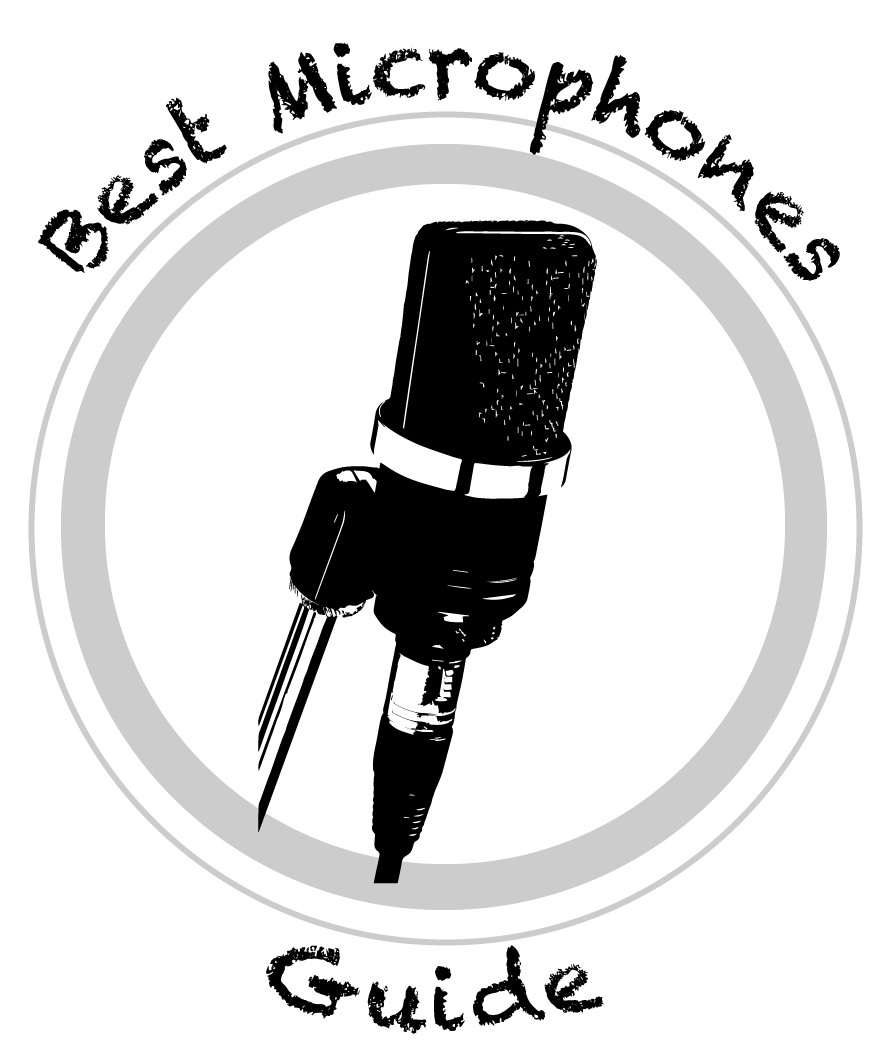Blue Baby Bottle SL Microphone Review:
A Great Looking Mic that Sounds as Good as It Looks
As an Amazon Associate, I earn from qualifying purchases at no additional cost to you.

The Blue Baby Bottle SL microphone is a high quality studio microphone that can help you achieve professional sounding vocals at a reasonable price point for its quality level. It delivers natural, warm, smooth sounding vocals. Moreover, the Blue Baby Bottle is versatile and can be used to record electric guitar, acoustic guitar, and even some drum applications. And of course, Blue designed it to be eye catching and distinctive looking.
A Brief History of Blue Microphones
To provide a history of the Blue Baby Bottle SL, it is necessary to include some history of the Blue Microphones company.
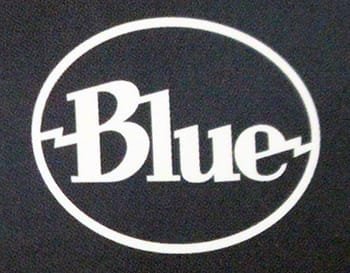
The Blue Microphones company was officially founded in 1995 in Latvia by Latvian engineer Mārtiņš Saulespurēns and American musician Bernard “Skipper” Wise.
Blue stands for “Baltic Latvian Universal Electronics.”
Blue started out as a pro recording microphone company and utilized a strategy of combining great sound plus high quality with eye catching looks. Their pro recording microphones included the Blueberry, the Dragonfly, the Kiwi, the (original) Baby Bottle, and the Bottle.
From its founding until 2004, Blue’s Microphones were manufactured in Latvia. However, in 2005, manufacturing moved primarily to China and to a lesser degree, the United States.
During the mid 2000s, Blue decided, with Apple’s encouragement, to start making quality USB microphones that would work easily with Apple’s Garageband software.
Skipper Wise told the LA Times that “after using the software, I knew this was going to change everything. GarageBand changed the type of business Blue is.”
This effort resulted in, first, the Blue Snowball, and later the Blue Yeti. These USB microphones became their biggest selling and best-known products. The Blue Snowball was even sold in Apple Stores after its launch.
In 2008, a majority stake in Blue was sold to private equity company Transom Capital. The founders retained a minority stake and continued to work at Blue.
In 2010, John Meier was hired as CEO of Blue.
During 2013, Blue was sold again, this time to The Riverside Company. With this transaction, the two founders left Blue.
Finally, in 2018 Blue was sold to the well-known Swiss manufacturer Logitech for $117 million. Following this transaction, Meier stepped down as CEO. Blue had grown “10 fold” during his tenure.
At the time of the sale, Blue and Meier both expressed their excitement and optimism over being acquired by Logitech.
However, in 2023, Logitech announced that they would be doing away with Blue’s branding.
Currently, on their website, they have changed to a Yeti brand with no mention of Blue on the Yeti mics. They are also only promoting the USB mics they acquired from Blue on their web site.
There is no mention of any of their pro recording mics on the Logitech web site. So there is a potential risk that they are in process of being phased out.
The web sites formerly operated by Blue, namely bluemic.com and bluedesigns.com, have been changed to re-direct to Logitech’s web site.
A Brief History of the Blue Baby Bottle SL
OK, so within this overall context, let’s talk about the history of the Blue Baby Bottle SL microphone.
Blue founder Skipper Wise stated that, prior to the official founding of Blue in 1995, the plans and designs for 7 of Blue’s original microphones were drawn up starting in 1991.
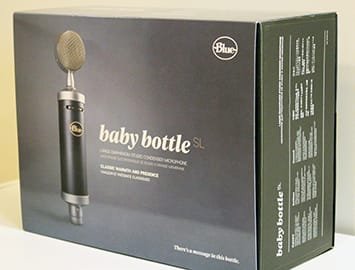
However, it took many years to bring all of those microphones to life. The last of the 7 to be brought into production was the original Blue Baby Bottle, which was first released in 2001.
At the time of its release, it was Blue’s most affordable microphone.
The styling of the original Blue Baby Bottle was based on the Blue Bottle microphone, which was their first ever mic, and which cost 10x the price of the Baby Bottle. The Bottle was a valve microphone and had 8 interchangeable capsules.
The Baby Bottle was half the size of the Bottle and had only 1 capsule. The Baby Bottle sold for around $1000 and was a key component of Blue’s prosumer type microphone offerings. Eventually, it and many other of Blue’s top pro audio microphones were discontinued.
In 2017, Blue introduced a new model of the Blue Baby Bottle called the Blue Baby Bottle SL. With nearly identical looks, it sold for a more affordable price, often around $400.
The Blue Baby Bottle SL was the high end mic of the new line of mics released by Blue. Other models released in this new line of mics were the Blue Spark SL (low end model) and the Blue Bluebird SL (midrange model).
Though the new model has the additional name of SL affiliated with it, we will sometimes refer to it as the Blue Baby Bottle in this review, as many people often refer to the new version that way.
Notable Features of the Blue Baby Bottle SL
No review would be complete without covering the key features, so here we go.
The Blue Baby Bottle SL is a large diaphragm pressure gradient condenser microphone with a cardioid polar pattern. It has a frequency response range of 20Hz to 20kHz. Max SPL is 134dB.
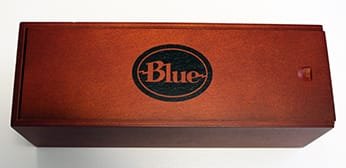
The microphone has a very distinctive and elegant look to it consistent with Blue’s efforts to create striking visual designs for their microphones.
Also consistent with this, the overall packaging of the microphone is impressive and includes a wood box.
The microphone feels quite solid and comes with a shock mount.
The Baby Bottle SL comes with a high pass filter switch as well as a -20dB pad.
The Blue Baby Bottle SL Can Deliver Studio Quality Vocals
While it can be used to record instruments as well, the Blue Baby Bottle is primarily known for being a top vocal microphone.
In our testing, it lived up to this billing. We really like this microphone a lot. It captures very natural, smooth sounding vocals.
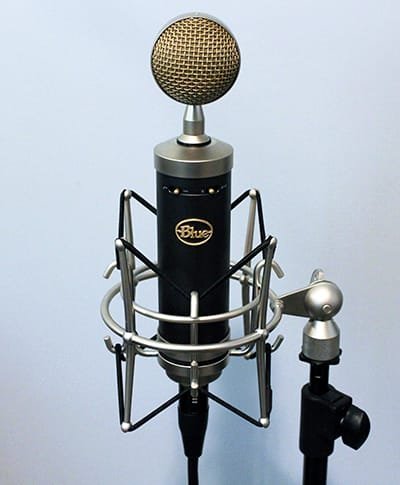
While Blue’s lower cost condenser microphone the Blue Spark SL produces a bit of a synthetic sounding vocal, there was none of that with the Blue Baby Bottle.
The microphone has nice clarity and does well capturing detail. There is a nice tone on low notes that stood out. It did a strong job on louder rock vocals as well.
As far as the high pass filter, whether or not you would want to use it for vocals definitely depends on the singer.
It cuts through the mix better but for certain singers it may be bordering on too bright sounding on certain notes. It may be a viable option for many singers and is worth trying to see whether you like it better or worse than the standard setting.
Overall, we can enthusiastically recommend the Blue Baby Bottle SL for use in recording vocals.
The Blue Baby Bottle SL is an Excellent Microphone for Recording Acoustic Guitar
For this microphone review, we put the Blue Baby Bottle through the paces testing its ability to record acoustic guitar. We found that it did an excellent job.
The Baby Bottle really shined on arpeggios and single notes, recording a robust, full sound that had nice clarity, good tone, and was crisp and vibrant.
For lead type playing, it captured a very beautiful tone and did an especially nice job on vibrato and held notes.
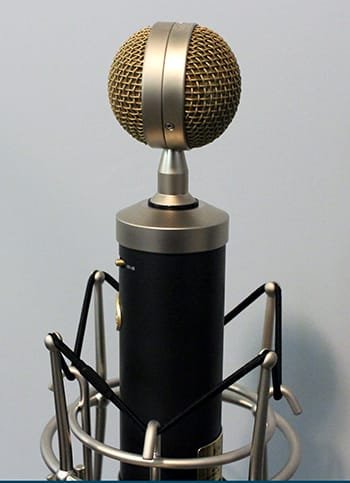
With fingerpicking, the Blue Baby Bottle delivered a warm, mellow sound that was rather inviting and cozy.
On strummed chords, the Blue Baby Bottle did well capturing the percussive sounds of the guitar. Depending on the specific acoustic guitar, the piece being played, and the positioning of the microphone, aggressive guitar strumming was bright and crisp, and could occasionally be a little too bright sounding. This could likely be fixed with EQ as necessary.
We did test the high pass filter as well. Surprisingly, we kind of liked it for chords – it was bright but not really harsh. It didn’t sound as good for argeggios. For fingerpicking, it sounded good. However, the added brightness removes a bit of the rounded warmth we liked on the regular setting. It is worth experimenting with the filter for acoustic guitar to see what you think, but our inclination would be to use the regular setting.
The Blue Baby Bottle SL Can Help You Shape Your Sound Recording Electric Guitar
The Blue Baby Bottle is worth trying on electric guitar recordings. It can help you achieve a unique tone that you won’t get it you just use a standard microphone for the purpose, like a Shure SM57.
For distorted guitar / hard rock chords and strumming, the Blue Baby Bottle delivered a big beefy, muscular tone which sounded thick and aggressive. A sort of robust wall of sound.
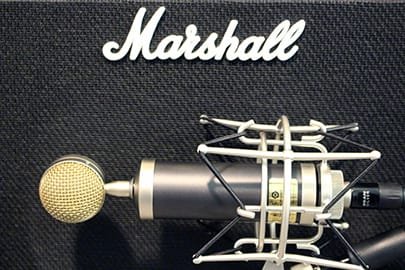
On muting, it was solid but didn’t really stand out as much.
In terms of distorted lead guitar, the Blue Baby Bottle SL definitely sounds good. The tone It captured was very saturated and warm sounding. Overall, a very clear, rich tone for lead guitar.
One interesting thing we tried was recording a hard rock rhythm guitar track 2x – once on the standard setting and once using the high pass filter, then panning them left and right. This produced an interesting result that is worth trying.
For strummed clean sounds, the Blue Baby Bottle SL recorded a crisp, bright sound that could cut through a mix. For lead guitar, it produced especially nice mids and also sounded particularly good on sustained notes. On arpeggios, it captured a vibrant, upbeat sounding tone. Overall for clean guitar, it was excellent on the high end and mids, and a little bit lacking on the low end.
One note in terms of using it for recording electric guitar: The shock mount it sits in does make it more difficult to mic amps with, especially if trying to close mic the amp. The Rode NT1 has a similar issue.
Conclusion
Here is a quick summary conclusion for this Blue Baby Bottle SL review.
We highly recommend the Blue Baby Bottle SL microphone for recording vocals, especially at its price point. The microphone is ascetically pleasing and is a natural, warm, and smooth sounding microphone that can deliver professional sounding vocals.
It has the added benefit of being versatile enough to be used to record acoustic guitar and electric guitar, doing a good job for both.
As the likelihood is that Logitech is phasing out the microphone as part of their plans to only move forward with Blue’s USB microphones such as the Yeti, we recommend that if you are interested in the Blue Baby Bottle SL, you may want to get it sooner rather than later.
